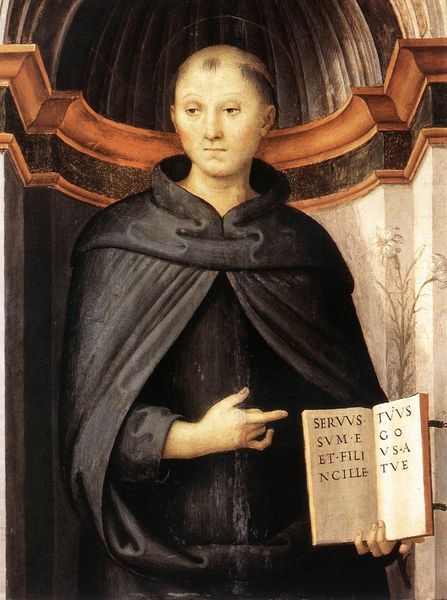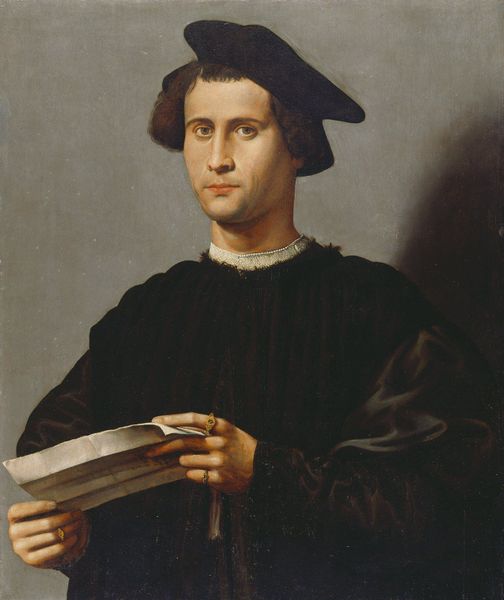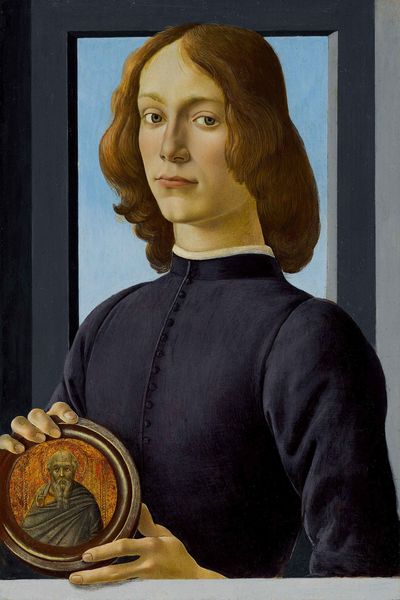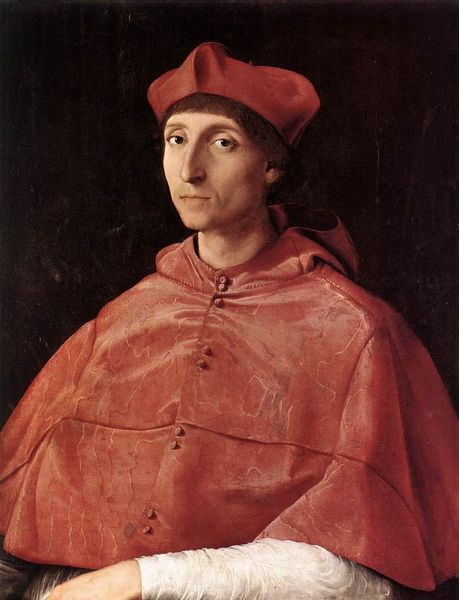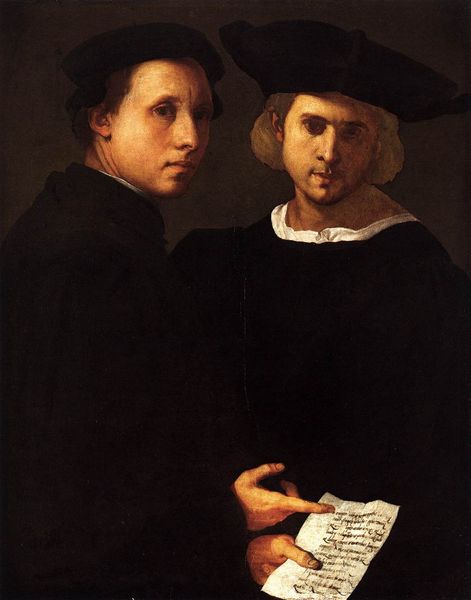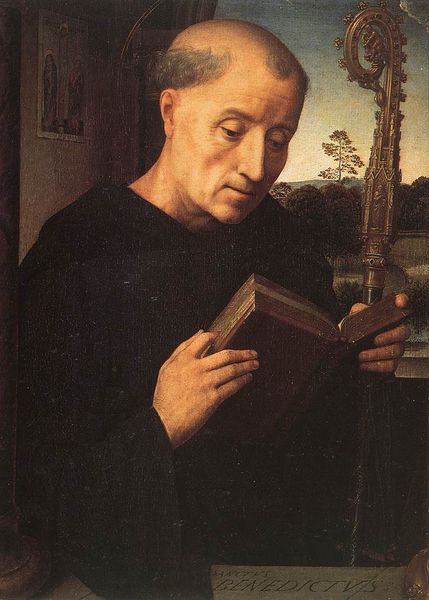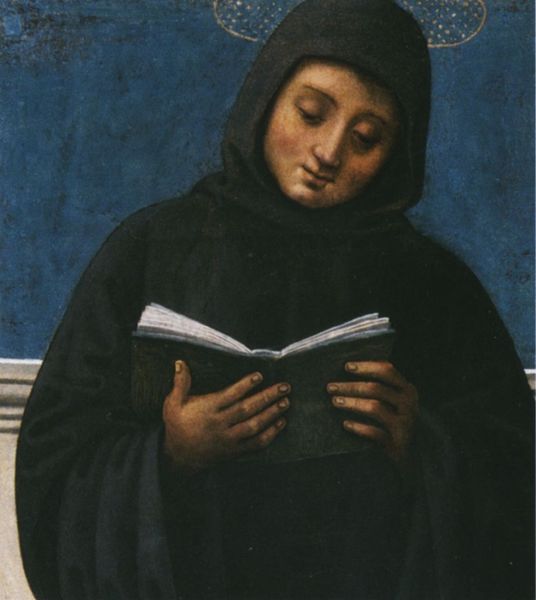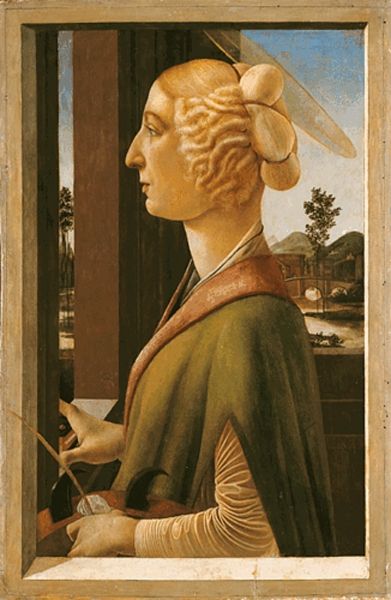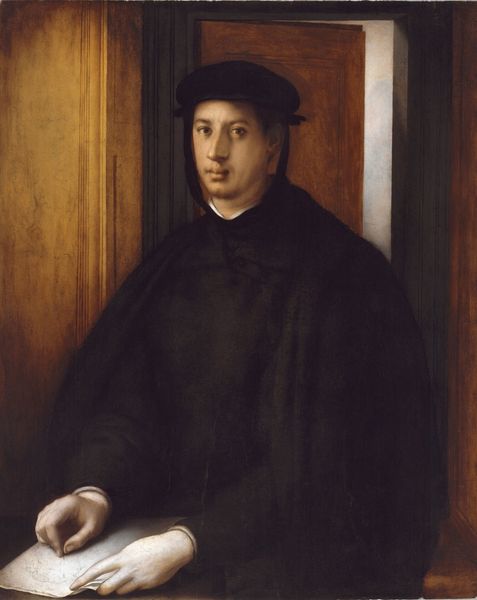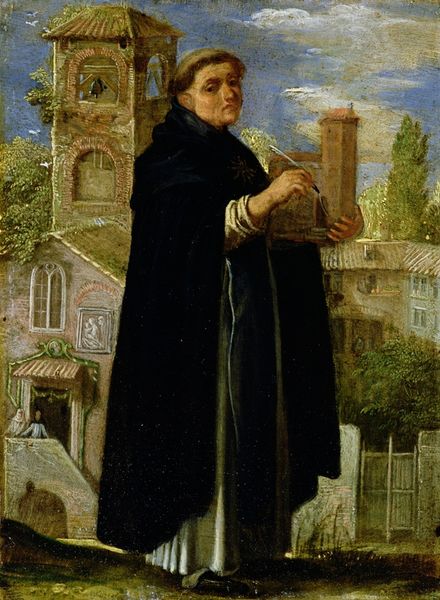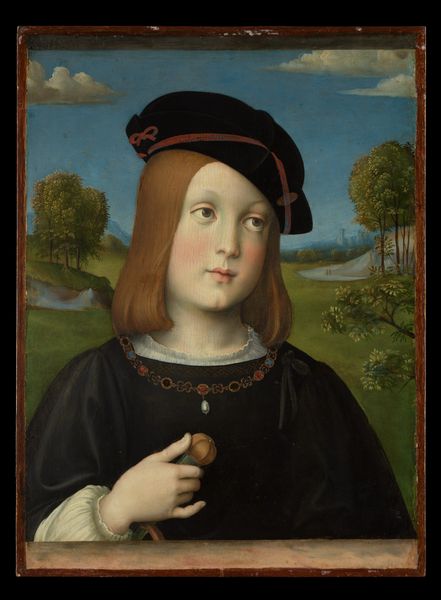
painting, oil-paint
#
portrait
#
portrait
#
painting
#
oil-paint
#
mannerism
#
history-painting
#
academic-art
Dimensions: 102 x 85 cm
Copyright: Public domain
Curator: What we have before us is Bronzino’s “Ugolino Martelli,” painted in 1535. Editor: Wow, okay. My first impression is… brooding. The dark colors and his sidelong glance give him such a melancholic air. It's so mannerist, all elongated fingers and necks and strangely intense. Curator: Absolutely. It's a study in controlled elegance, a portrait of a Florentine humanist, surrounded by classical allusions and symbols of intellectual pursuit. It’s very deliberately crafted to present Martelli as an educated, thoughtful man within a very specific social context. Editor: But the symbols feel…staged? Like, look, I’m deep in thought! Very dramatic. The books, the sculpture in the background—are we supposed to be impressed by the stage setting or does it offer a deep, immersive reflection of who he is as a person? It almost veers into parody. Curator: Well, there's a level of self-awareness present in many Bronzino portraits. It's less about revealing a subject’s “true” inner self and more about constructing a persona through symbolic visual language. The book on geometry might not signify his proficiency in mathematics per se but rather his appreciation for knowledge, virtue, and the arts, as idealized in the Platonic Academy of Florence. Editor: True, true. He's curating his image. Still, though, even knowing the historical context, there's something unsettling about the contrast between the almost severe geometry of the architectural setting and the softness of Ugolino’s face. He seems trapped. Curator: Trapped by the conventions of courtly portraiture perhaps. Editor: Maybe. It’s compelling, nonetheless, and reveals, in its own carefully stylized way, something of the pressures placed upon individuals within that very specific moment in history. He wants to convey a great intellect while the setting subtly holds him, an individual constrained by culture and expectation. Curator: An excellent observation, capturing the nuances woven throughout this fascinating example of High Renaissance portraiture! Editor: Exactly. And in these strange, mannered gestures that are so perfectly portrayed, we can see that there is something truly intimate as it all falls away.
Comments
No comments
Be the first to comment and join the conversation on the ultimate creative platform.
